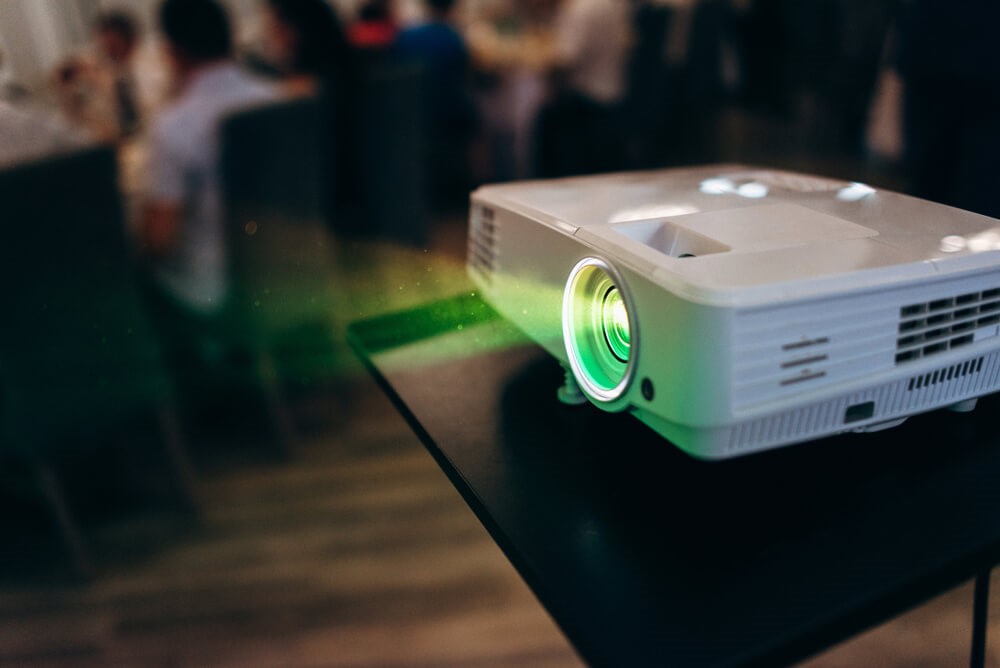Video projectors. High-technology projection. Basic projection.
Regardless of their satisfaction guarantee, video projectors are surely expensive.
Obviously, not all of them deliver as expected. As a result, heads ache. Tears flow.
Is it the manufacturers’ fault? Yes. Somehow.
But, who’s accountable to it entirely? Sorry to say, but that would be you, the buyer. You’re the one brought it freely. Nobody forced you to buy one.
In other words, you have the highest responsibility to it, so that when the product turns out unsatisfyingly bad, the blame is all on you. It will be foolish to just go and buy one without doing your research. There are lots of resources online like this on buying projects or this guide to buying projectors, you should check these before making any sort of decisions.
There’s no way around it. That’s just how things are.
But, do you know that there’s what they call prevention? Now, if you’d let me brightly project (pun intended) to you my point, then you just might spare yourself the sorry with these top 3 money-worthy moves to buying a video projector! Allbeastreviews has a lot of resources to learn more about projectors.
Ready… power on!

Top 5 Basic Facts About Video Projectors:
- Video projectors are presentation tools. So, they’re expected to project with the brightest intensity, highest resolution, and deepest colors possible!
People use projectors beyond entertainment. Projectors prove to be the most convenient tool for presenting data, showcasing images, etc. Also, projectors have since become a staple in corporate field wherein information relay is very prevalent.
In case you haven’t noticed, video projectors all seem to function with the brightest intensity.
Yes. It would seem that of all them are blindingly bright with high resolution. But, what you don’t actually know beneath all these (which manufacturers don’t usually disclose) are differences in specs-texture, minute distinctions indiscernible to the naked eye.
Without the technical knowledge of spotting what exactly is genuinely bright and what is not, you’ll definitely get the shorter end of the stick.
And, we don’t want that, of course!
- There are two main types of projectors: DLP and LCD.
The Digital Light Processing (DLP) projector makes use of micro-tilting mirrors, lenses, and a number of chips. What propels all these inside is literally a spinning color wheel.
The chips process both light and color within the device. Once done, the color proceeds to the color wheel to be broken down into basic colors red, blue and green, before being thrown into the micro-mirrors to be reflected.
Simultaneous to being reflected, these reassembled colors, joined further by an added white color, pass through the lens to be projected.
While the DLP functions as manual as this, the LCD works more fluidly.
The Liquid-Crystal Display (LCD) projector, as its name suggests, no longer has to break down colors to display high brightness output. This type of projector is easily remembered being a product of a trans-missive technology.
Technically, a LCD projector works by organizing three main liquid crystal panels—prism, filter and lamp—to infuse color and light and finally shape the image across.

With these panels, colors don’t have to undergo disbanding so that they traffic out simultaneous with light, resulting in smooth, non-pixelated images on screen.
- Light Brightness and Color Brightness work differently in setting the projector in motion.
White Light Output (WLO) and Color Light Output (CLO) are different function differently in setting the image to be projected. Ironically, due to lack of technical knowledge, people mistake WLO and CLO to be under the same processing field.
Both may work identically in terms of light brightness. But, they are function separately so that WLO is on white light brightness, while CLO is on texture, hue and color light brightness.
- Projector’s brightness output is measured in lumens.
The measuring unit for overall projector brightness is lumens. Now, due to differing sources of brightness measurements among projectors, leading figures in the industry established the American National Standards Institute (ANSI) to standardize lumen requirement for projectors.
- The best projector brands that rock the market today are: BenQ, JVC, Epson, Optoma, and LG.
If you’re looking to buy the premium brands without feeling sorry after, then you’ll definitely be pleased by the top reviewed brands, BenQ, JVC, Epson, Optoma, and LG.
Top 3 Money-Worthy Moves to Buying Video Projector:
MOVE #1: Don’t be confused over buying LCD and DLP. The LCD projector emits equal concentration of white light and color light. The DLP, on the other hand, seems brighter, because it releases white light more than colored light.
If you’re focused on buying the highest lumen projector, then you’re bound to purchase the DLP projector. But, if a toned lumen textured with heavy colors is what you’re looking for, then you’ll be satisfied with the LCD projector.
MOVE #2: Consider the Contrast Ratio before bagging that projector! Contrast ratio determines the distinctiveness of brightness. It’s essentially the depth of both white and black colors of an image that constitutes the concentration of white and black colors.
Other added colors won’t also be highlighted without the projector’s contrast capacity.
Obviously, high lumens in a projector can not entirely guarantee an excellent resolution. It would all still be in vain if the product turns out, in the end, to have low contrast ratio. The result would be fuzzy colors on screen.
A workable contrast ratio rating is: 1,500. But, the best standard is 2,000.
MOVE #3: If you’re looking to purchase a 4K projector, take from an Ultra Blu-Ray Player.
Four K projector refers to a high-resolution/high pixel density projector. The main attraction of a 4K projector is a digital 4,000 pixel resolution displayed horizontally on screen.
This is most especially impressive in the context of movie projection.
Regardless of the brand, as long the model is designed to be an Ultra HD Blu-Ray Player, it’s sure to deliver with a 4K magic!
Related Categories: Tech, Reviews








